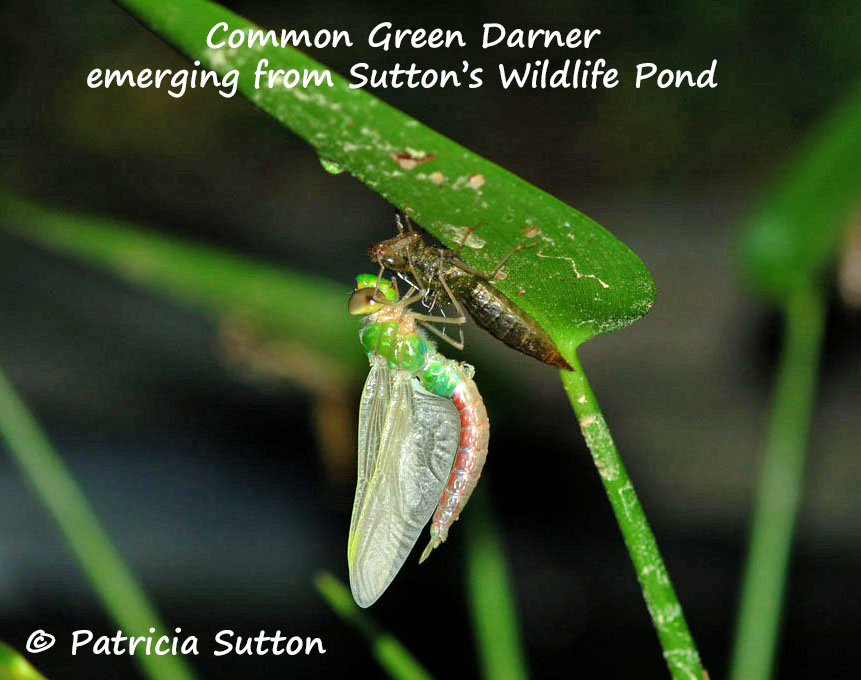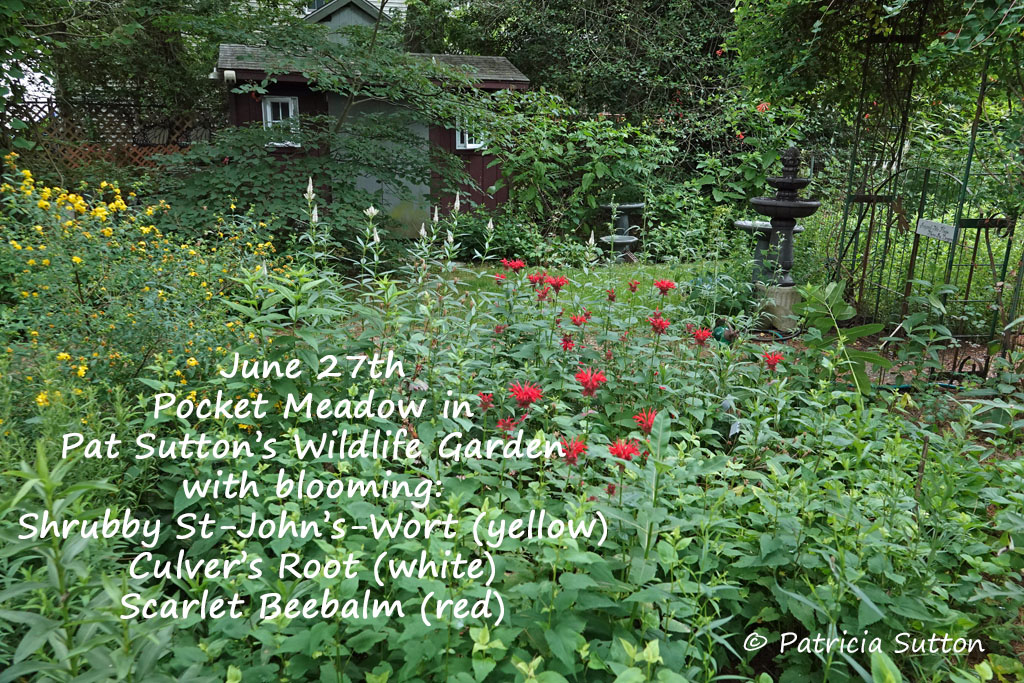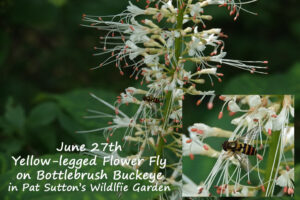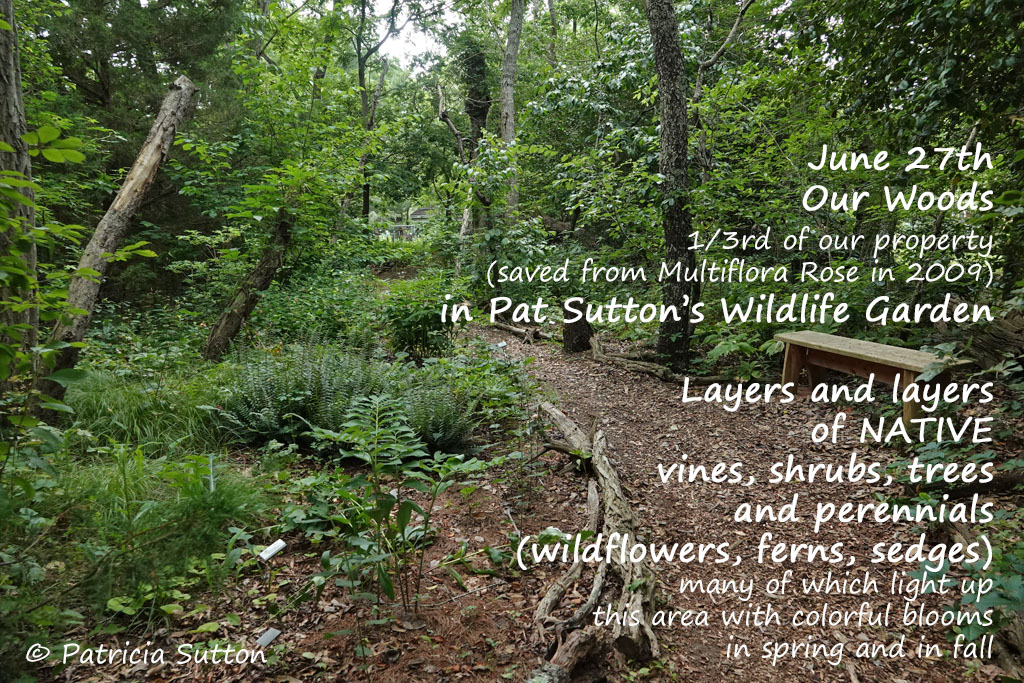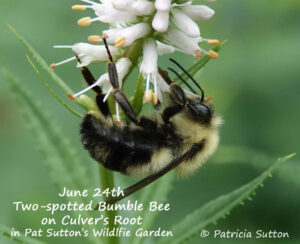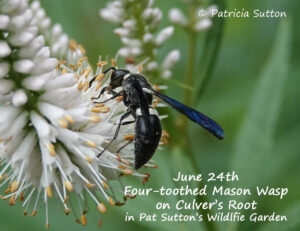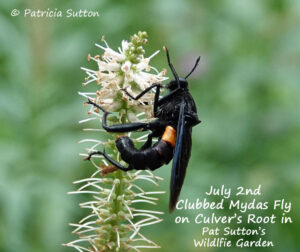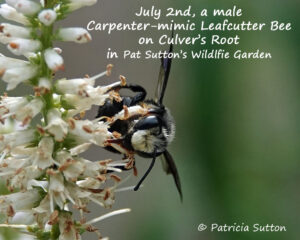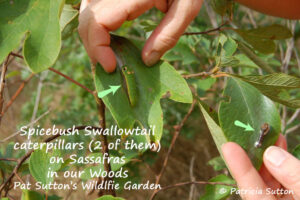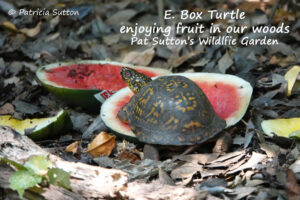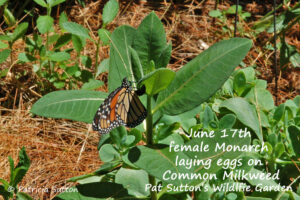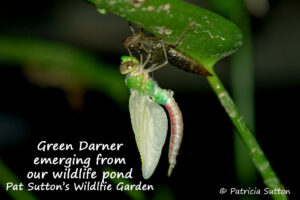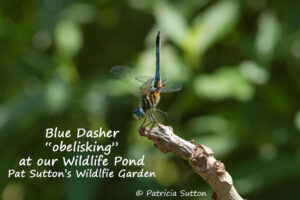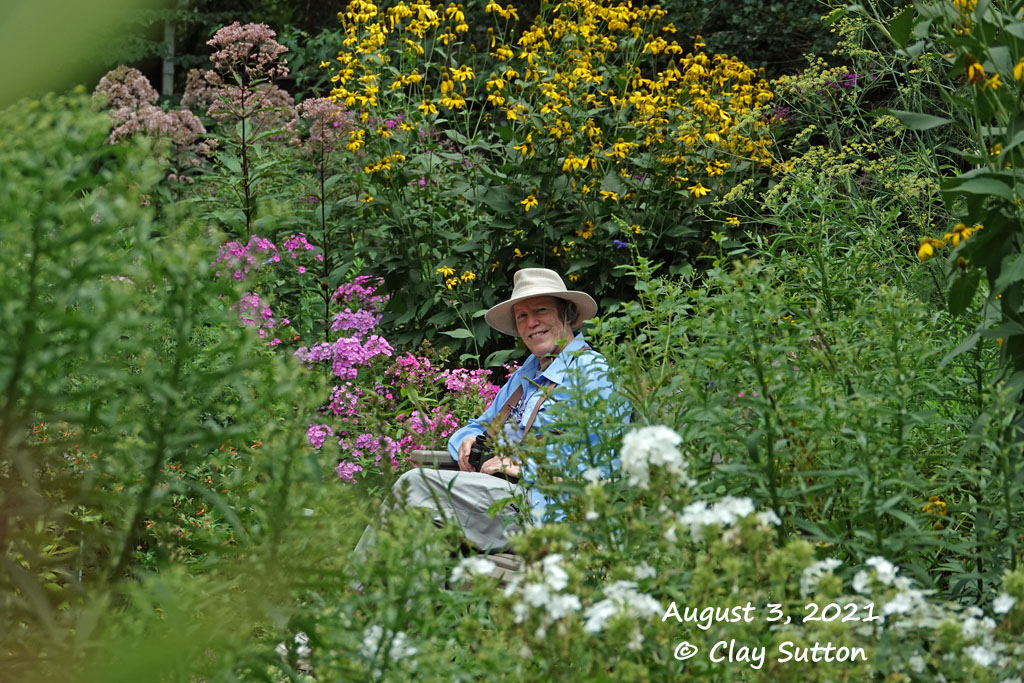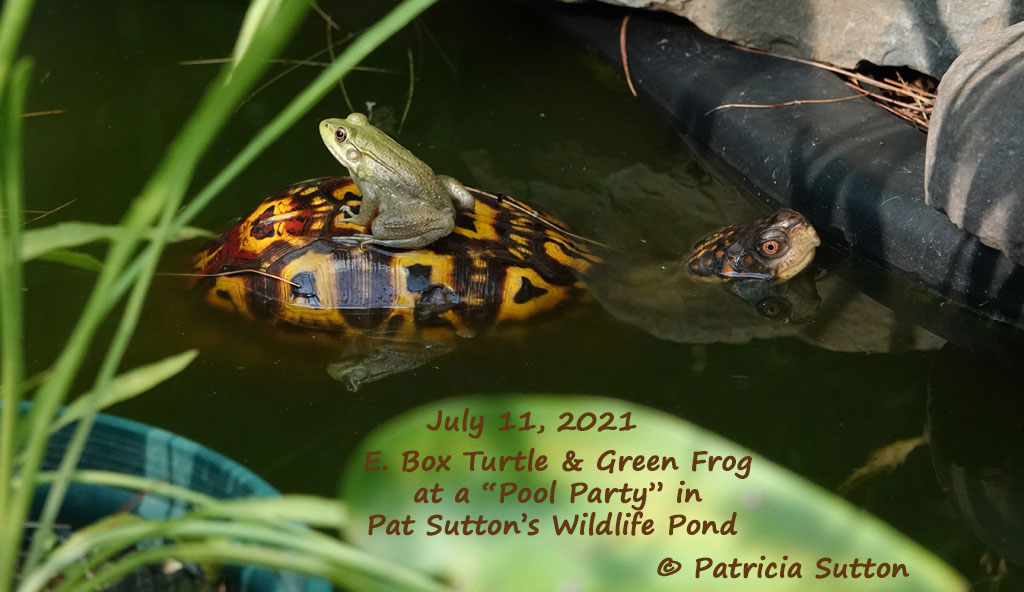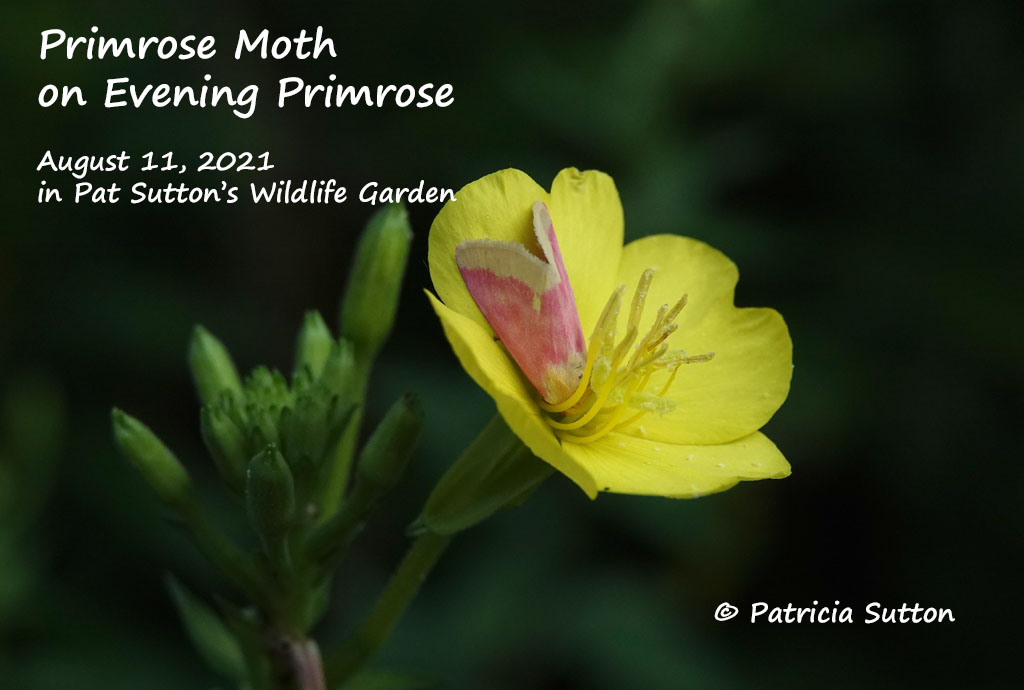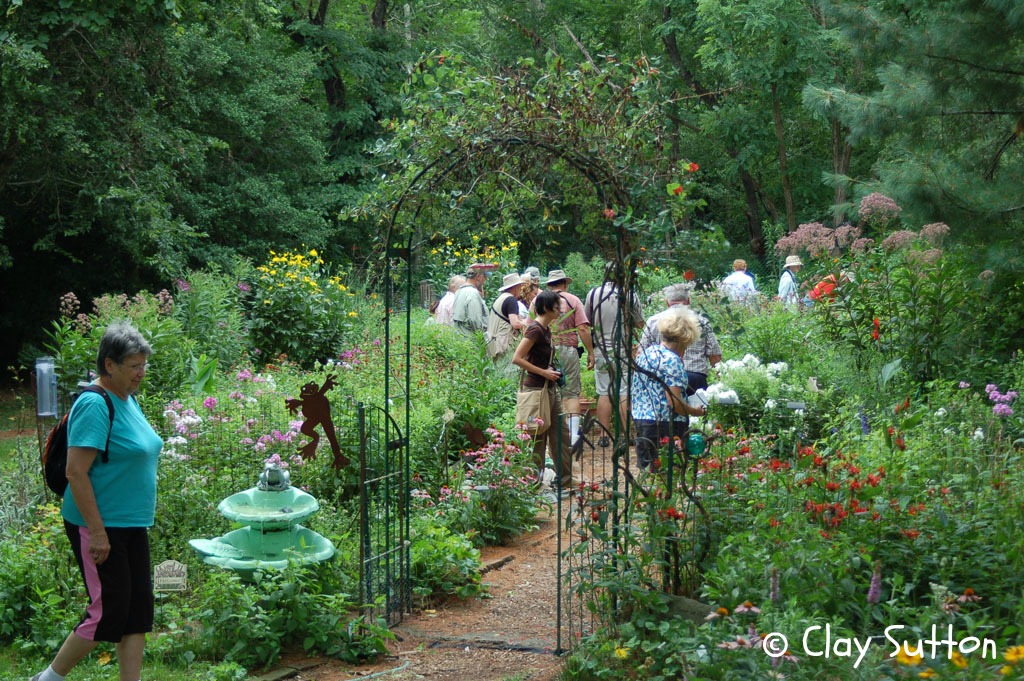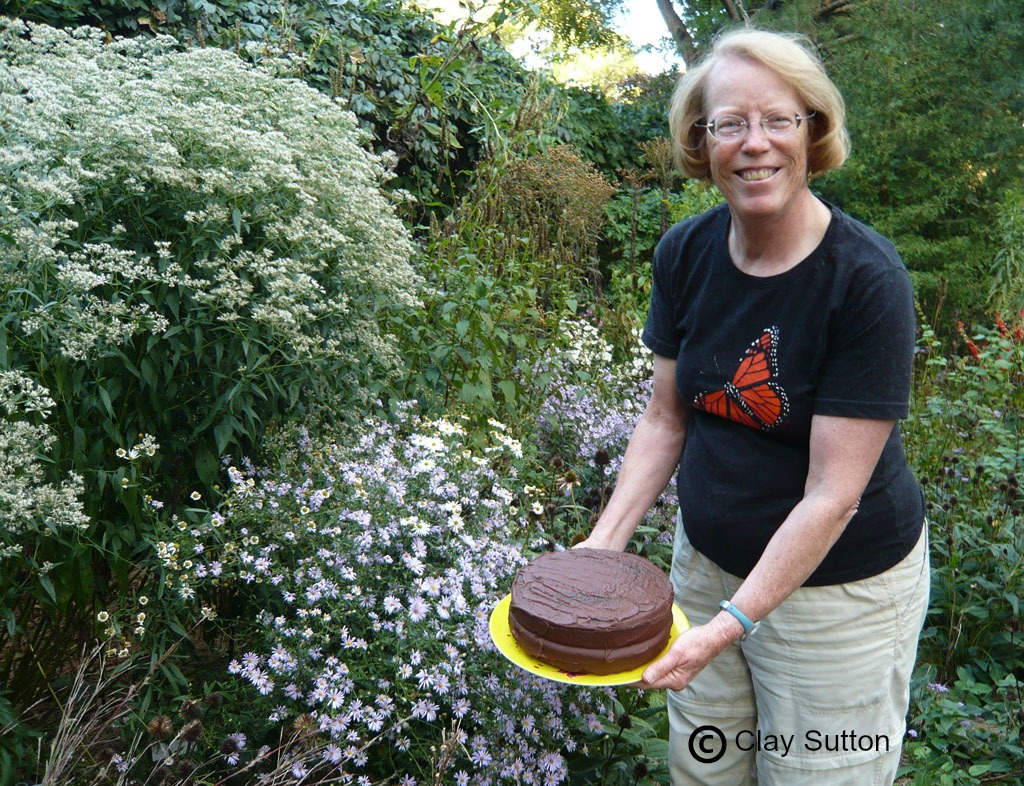The Bergen-Passaic Chapter of the Native Plant Society of NJ had me present my program, “How to Create a No-Fuss Wildlife Pond” via ZOOM this past week. This program is packed with lots of tips on what not to do, sparing you mountains of aggravation and frustration. It also includes many tips on exactly what works to attract more wildlife than you imagined possible. Details follow.
Members and non-members were welcome! But if you are not a member of the Native Plant Society of NJ, you are missing great opportunities and learning experiences galore!!! It is easy to join and support this great group. To join or renew your membership in the Native Plant Society of NJ, click HERE.
The Bergen-Passaic Chapter
of the Native Plant Society of NJ
brought you
“How to Create a No-Fuss Wildlife Pond,”
by Pat Sutton
(a ZOOM presentation)
Wednesday, October 9, 2024
7:30 – 9:00 p.m.
I gave permission to the Native Plant Society of NJ to record this program and have it available for 1 month: 10-9-24 to 11-9-24 (this way an old version won’t be out there long after I’ve updated my program multiple times). So, if you missed this program, you can find the recording HERE, along with many other excellent presentations that have been given to the Native Plant Society of NJ
Click HERE for my 2-page handout on this topic:
“No-Fuss Wildlife Pond”
ABOUT THE PROGRAM: Frogs, toads, and dragonflies all need freshwater ponds for egg laying to create future generations. Even a tiny pond will attract and support them. Learn what a true wildlife pond is and how simple it is to create – with no need for running water, filters, fish, and all the fuss. Pat Sutton will share the basics of how to create a wildlife pond and, even more importantly, how to maintain it so that wildlife benefits. Learn which native plants to add to the pond (and which problem plants to avoid). Don’t make the same mistake that others have made by creating a pond for exotic fish that supports little else. In a true wildlife pond, expect to attract and watch the amazing life cycle of huge Green Darner dragonflies or count a growing population of Leopard Frogs, Green Frogs, and Gray Treefrogs that find your pond as if by magic. Look forward to the child-like wonder and joy of looking for and finding young Gray Treefrogs that have emerged from your very own pond and taken up residence on insect-rich, native nectar plants in your garden! Create it and they will come!
* * * * * * * * * * * * * * * * * * * * * * * * *
Learn more about The Bergen-Passaic Chapter of the Native Plant Society of NJ by clicking HERE.
If you live elsewhere in NJ, there are a number of Chapters of the Native Plant Society of NJ. See if there is a Chapter near you. These chapters offer great learning opportunities and will connect you with kindred spirits.
Happy Wildlife Gardening,
Pat

